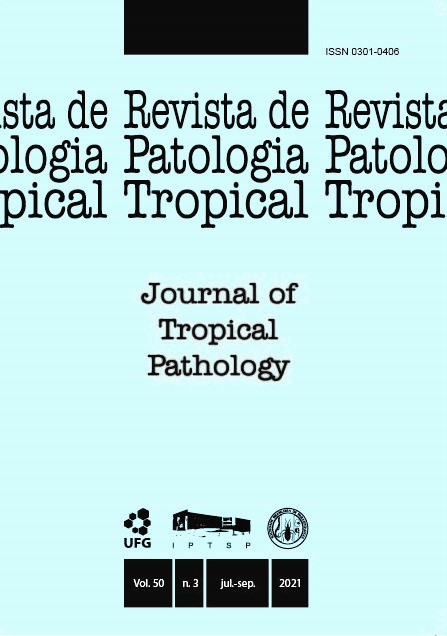Tuberculosis incidence in patients with human immunodeficiency virus, treated with isoniazid for latent tuberculosis infection
DOI:
https://doi.org/10.5216/rpt.v50i3.68574Abstract
Tuberculosis is the leading cause of death amongst adults with human immunodeficiency virus (HIV) infection. The lifetime risk of tuberculosis disease for a person with latent infection is estimated at 5-10% with most cases occurring within five years of initial infection. The World Health Organization recommends isoniazid preventive therapy (IPT) for latent tuberculosis treatment, amongst other strategies. The aim was to assess tuberculosis incidence, survival (free of tuberculosis) and associated factors in HIV-positive patients. IPT was offered to participants with a positive (≥5mm) tuberculin skin test. Participants were followed from February 2003-December 2016. Kaplan-Meier was used for survival analysis. Variables with p-value ≤ 0.2 in the univariate analysis entered into the multivariate Cox-Model, keeping those with p-value ≤ 0.05. The 95% confidence interval of incidence of tuberculosis was estimated using Poisson distribution. One hundred nineteen patients completed the IPT and were followed for a median duration of 110.7 months (IQR 93.1-121.0). The probability of developing tuberculosis (10 years post-IPT) was 5.4%. Tuberculosis incidence was 0.58/100 patient/years (CI 95% 0.213-1.264). IPT over 6 months provided long-term protection against tuberculosis. AIDS-defining illness was the only statistically significant variable (HR=5.67) in the multivariate model.
KEY WORDS: Latent tuberculosis; HIV; isoniazid; survival analysis.
Downloads
Downloads
Published
How to Cite
Issue
Section
License
The manuscript submission must be accompanied by a letter signed by all authors stating the full name and email address, confirming that the material has not been published or is under consideration for publication elsewhere, and agreeing to transfer copyright in all media and formats for Journal of Tropical Pathology. The authors will not be paid for published articles. They are solely responsible for the content of those articles, even if the Editor holds the right to adjust them to the norms of the journal.
The reviewers will not be paid for the peer review process.

